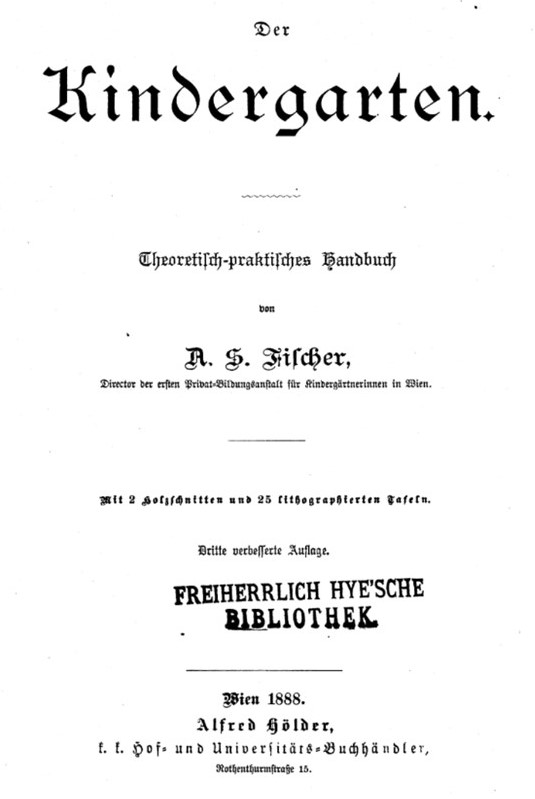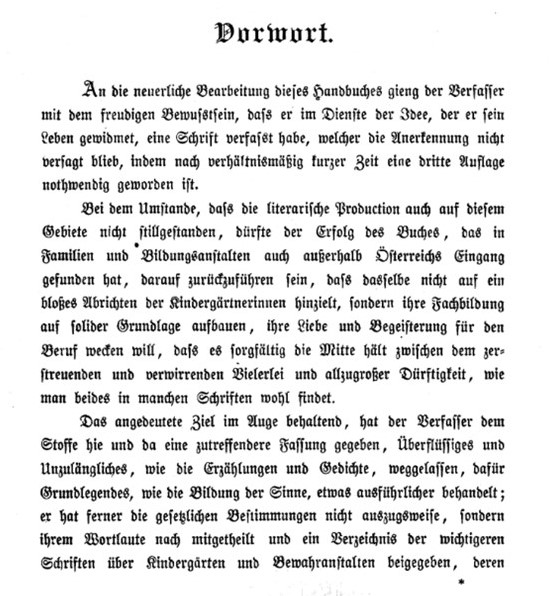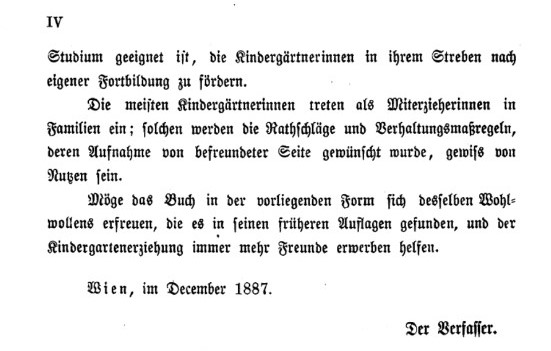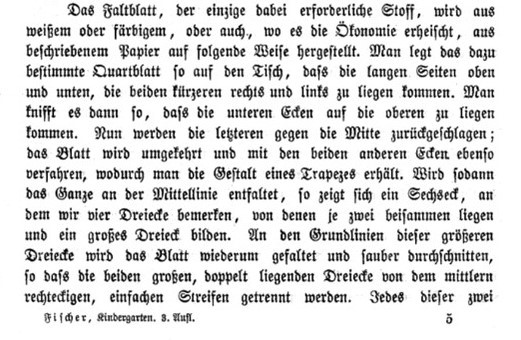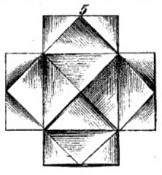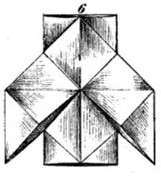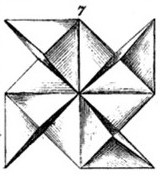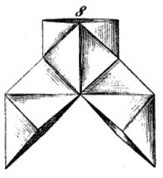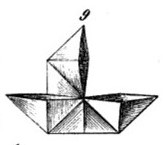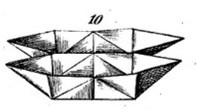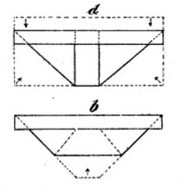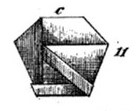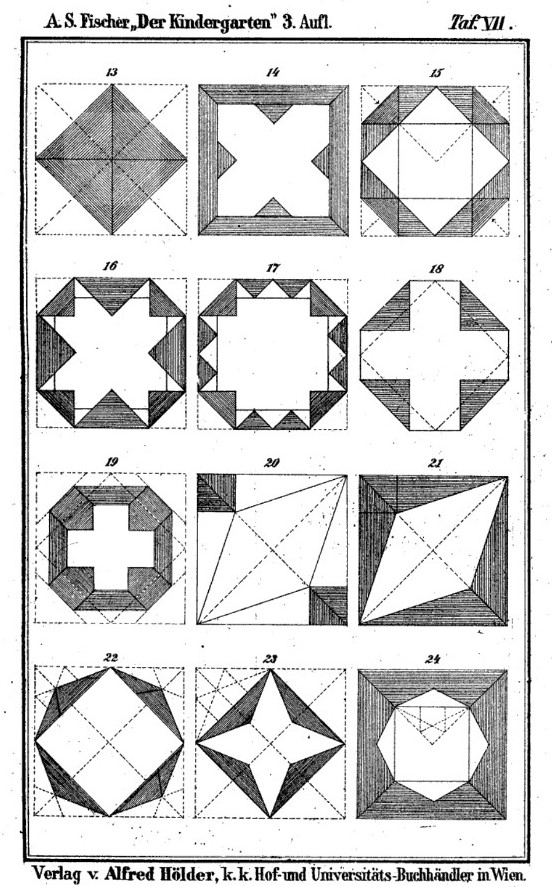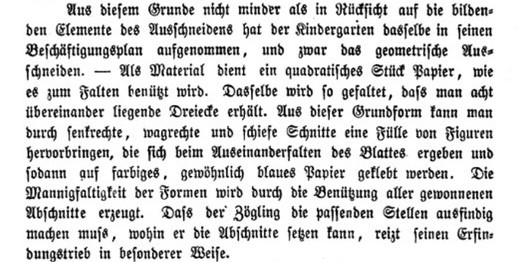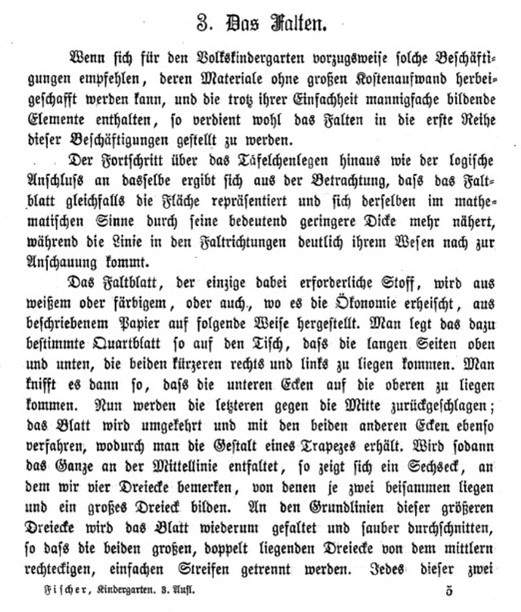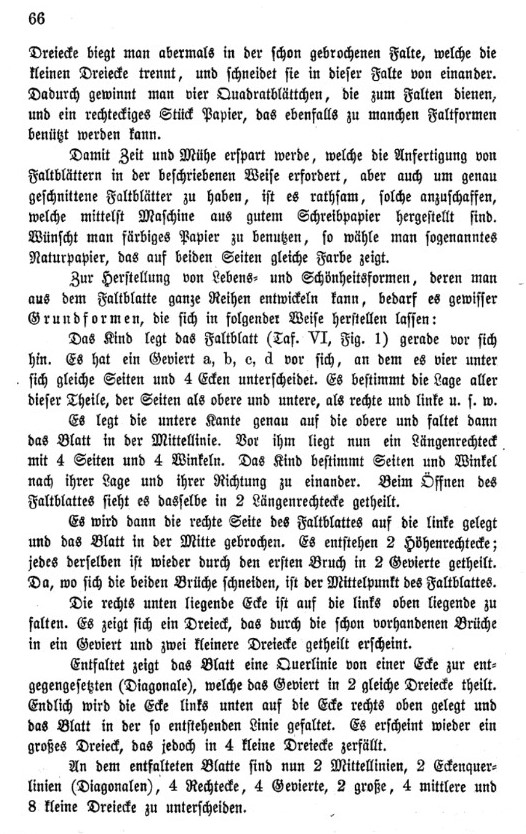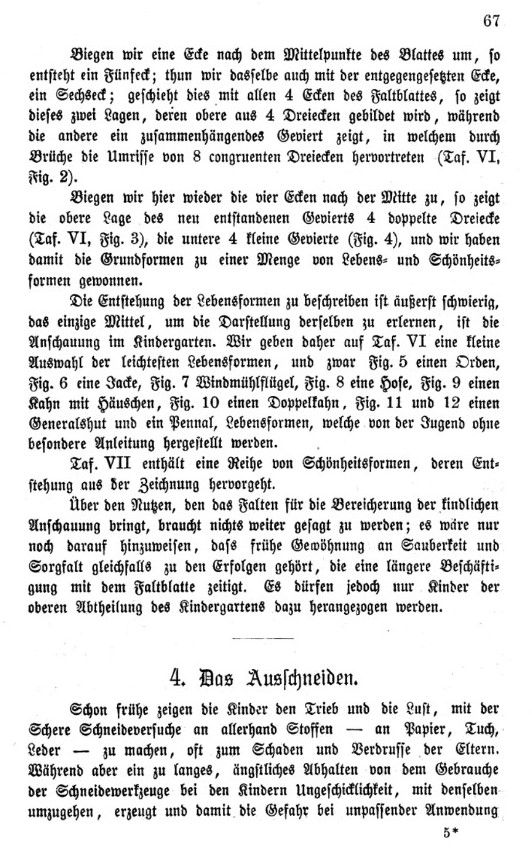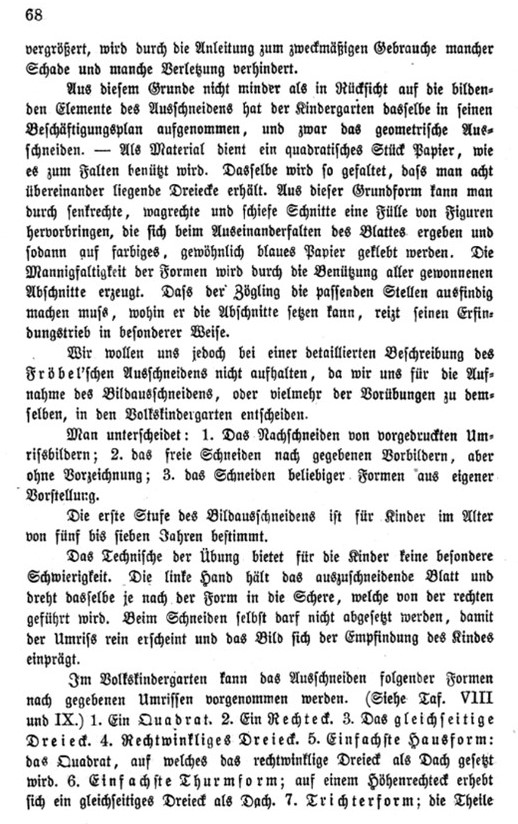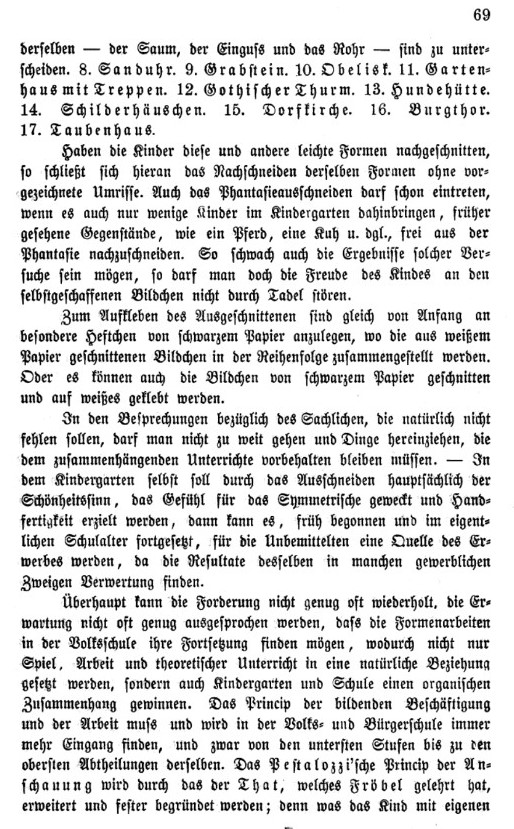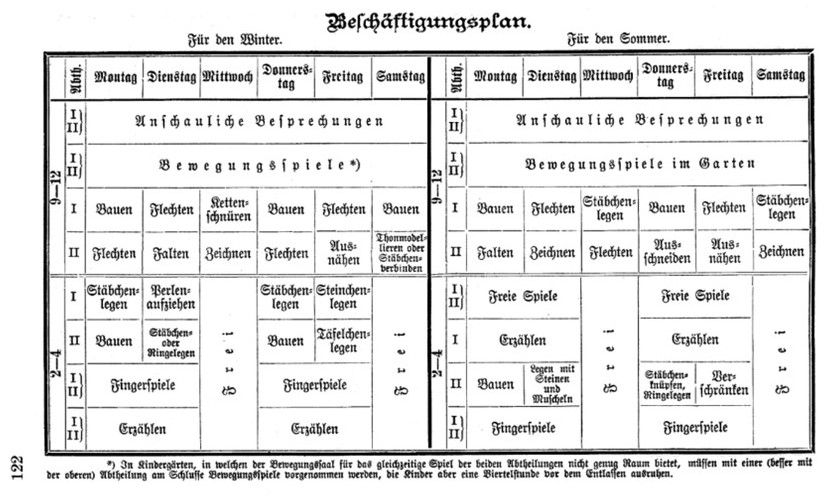| The Public Paperfolding History Project
Last updated 15/3/2024 x |
|||||||
| Der Kindergarten: Theoretisch-Praktisches Handbuch by A S Fischer, 1883 | |||||||
'The second edition of 'Der Kindergarten: Theoretisch-Praktisches Handbuch' by A S Fischer was published by Alfred Holder in Wien in 1883 (the first edition having been published in 1873). It contains chapters on Falten and Ausschneiden and a table showing how these occupations could be included in the lesson plan in both Winter and Summer. I have not seen a copy of the second edition and the information on this page is taken from the 1888 third edition. However, the Foreword to that edition makes it clear that there are no substantive changes to the plates or the main material in the book between the second and third editions. A fourth edition was issued in 1895. A full copy of the 1888 second edition can be accessed online here. **********
**********
The relevant passage says, roughly, 'the author has here and there ... omitted what was superfluous and inaccurate, such as the stories and poems, and treated the fundamental things in a little more detail.' I take this to mean there are no alterations to the plates or the paperfolding material. ********** Analysis Das Falten Froebel's method of cutting four squares from a rectangle The text describes Froebel's method of folding and cutting an oblong sheet of paper to create four squares and a long strip.
********** Lebensformen - Forms of Life
********** Einen Orden - The Cross
********** Eine Jade - The Jacket
********** Windmuhlflugel - The Windmill
********** Eine Hose - The Trousers
********** Eine Kahn mit Hauschen - The Boat with Sail
********** Einen Doppelkahn - The Double Boat
********** Einen Generalshut - The Mitre
********** Eine Pennal - The Pencil Case
********** Schonheitsformen - Forms of Beauty
********** Das Ausschneiden - Cutting Out The author gives an explanation of Froebel's occupation of Ausschneiden und Aufkleben including that all pieces should be used in the mounting phase but does not give details of any individual designs.
Instead he prefers to concentrate on the free-cutting of simple symmetrical shapes, first following pre-drawn outlines and then freehand. The paper is NOT folded in half to help the pupils achieve symmetry. ********* Selected Pages
**********
********** |
|||||||
